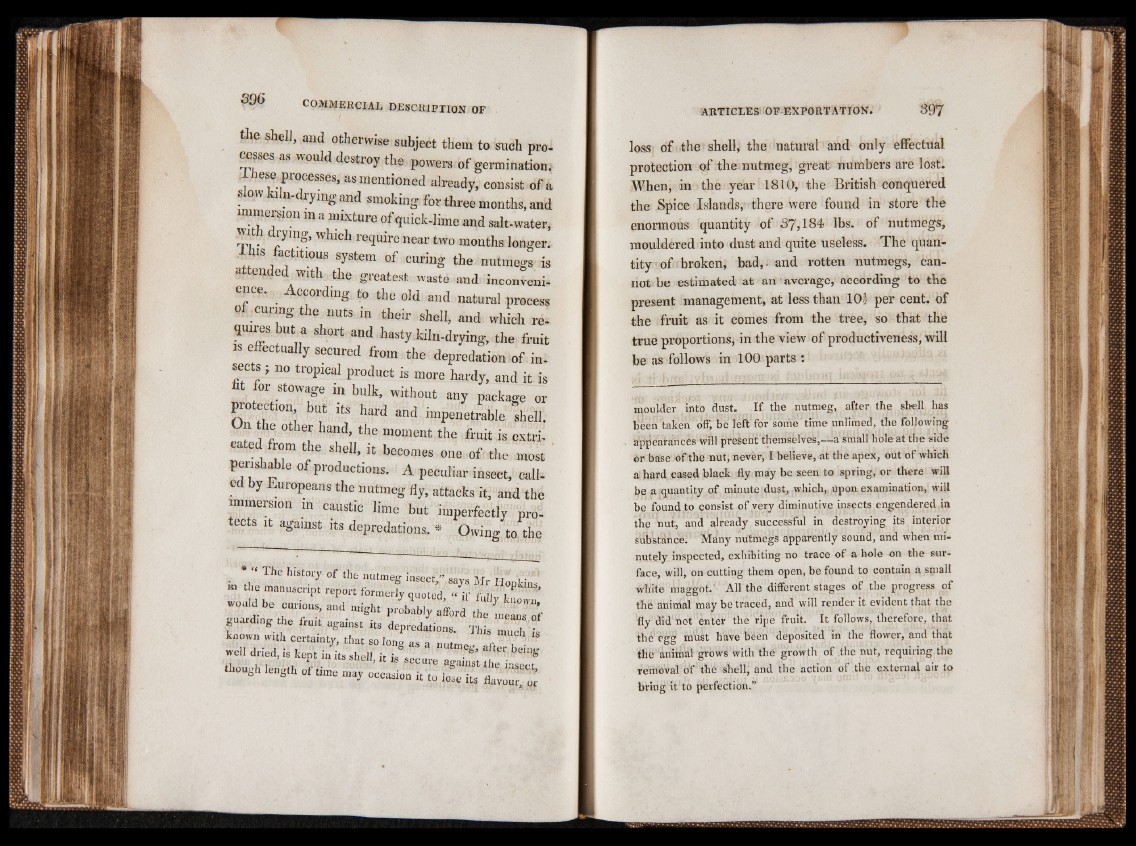
the shell, and otherwise subject them to such pro-
cesses as would destroy the powers of germination;
• ^ ^ P r(^cesses> ns mentioned already, consist of a
^low kiln-drying and smoking for three months, and
immersion m a mixture of ijuick-lime and salt-water,
-p.. '•Vln^’ W^ch require near two months longer.
bis factitious system of curing the nutmegs is
attended with the greatest waste and inconveni-
ence. According to the old and natural process
Securing the nuts in their shell, and which re-
quires but a short and hasty kiln-drying, the fruit
effectually secured from the depredation of insects
; no tropical product is more hardy, and it is
for stowage in bulk, without any package or
protection but its hard and impenetrable shell.
n the other hand, the moment the fruit is extricated
from the shell, it becomes one of the most
perishable of productions. A peculiar insect, called
by Europeans the nutmeg dy, attacks it, and the
immersion in caustic lime but imperfectly protects
it against its depredations. * Owing to the
* The history- of the nutmeg insect,” says. Mr Hopkins
m the manuscript report formerly quoted “ if fi.n ,
won,d be curious, uud might
guard,ug ,be fruit again, g dePredan„u, i , “ Tb i
li e a - W * « dned-18 keP‘ its shel8l,0 i',° i"sS s 9ecu1r e» »a‘g»a»iSn., athftee r 2
•hough length of timeuiay oooasiou ,1
loss of the shell, the natural and only effectual
protection of the nutmeg, great numbers are lost.
When, in the year 1810, the British conquered
the Spice Islands, there were found in store the
enormous quantity of 37,184 lbs. of nutmegs,
mouldered into dust and quite useless. The quantity
of broken, bad,, and rotten nutmegs, cannot
be estimated at an average, according to the
present management, at less than 101 per cent, of
the fruit as it comes from the tree, so that the
true proportions, in the view of productiveness, will
be as follows in 100 parts :
moulder into dust. If the nutmeg, after the shell has
been taken off, be left for some time unlimed, the following
appearances will present themselves,—a small hole at the side
or base of the nut, never, I believe, at the apex, out of which
a hard cased black fly may be seen to spring, or there will
be a quantity of minute dust, which, upon examination, will
be found to consist of very diminutive insects engendered in
the nut, and already successful in destroying its interior
substance.’ Many nutmegs apparently sound, and when minutely
inspected, exhibiting no trace of a hole on the surface,
will, on cutting them open, be found to contain a small
white maggot. All the different stages of the progress of
the animal may be traced, and will render it evident that the
fly did not enter the ripe fruit. It follows, therefore, that
the egg must have been deposited lit the flower, and that
the animal grows with the growth of the nut, requiring the
removal of the shell, and the action of the external air to
bring it to perfection.”